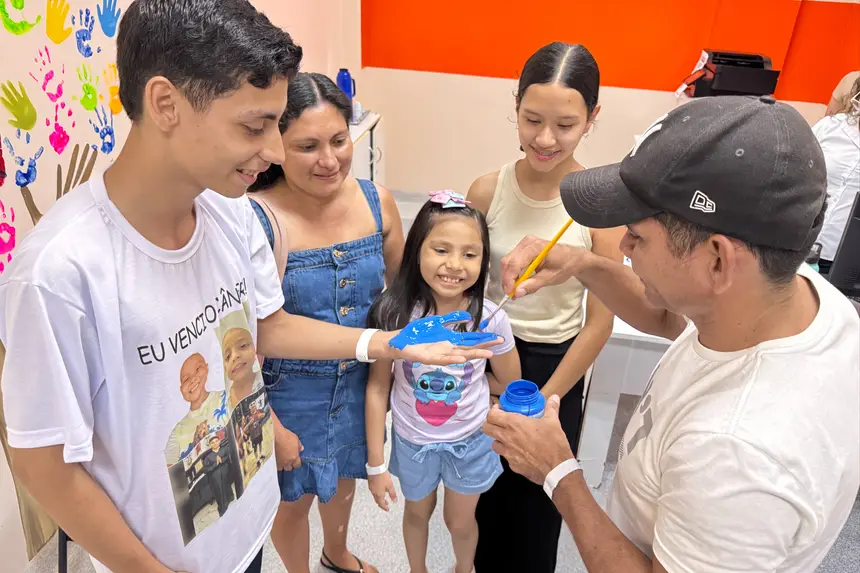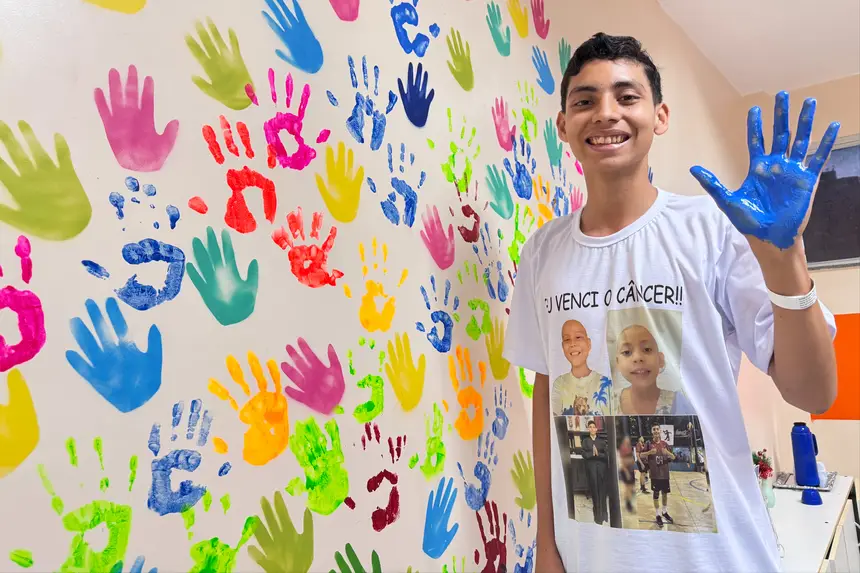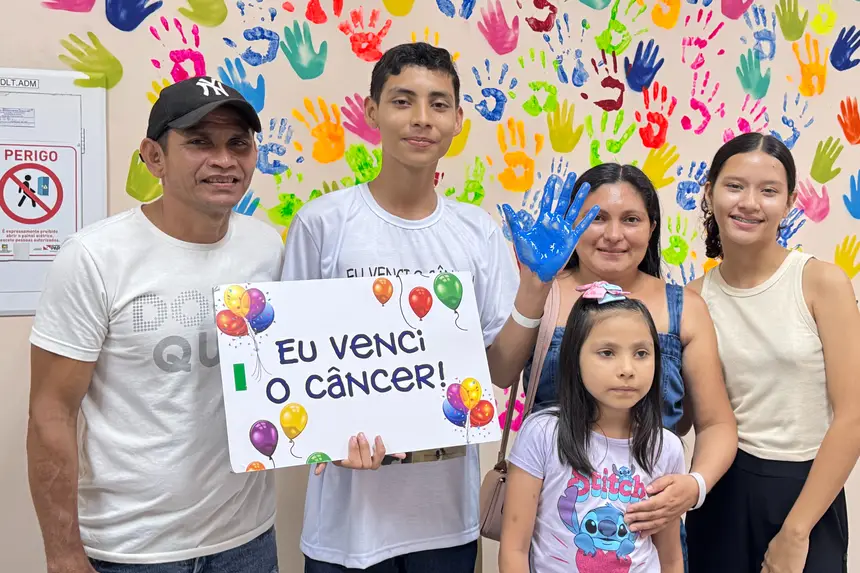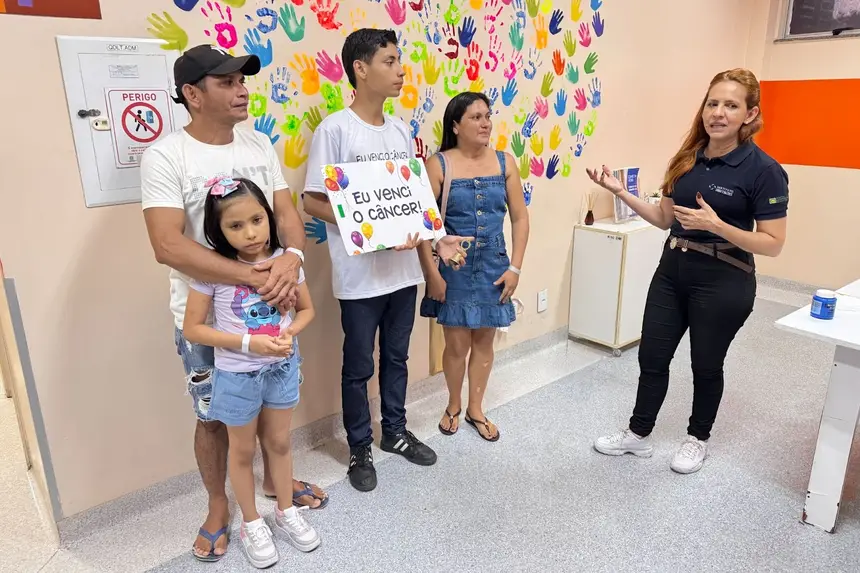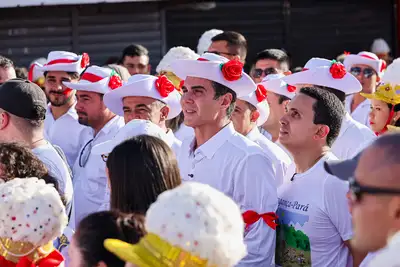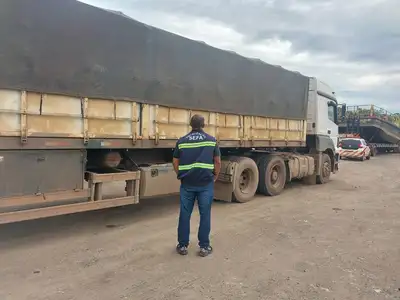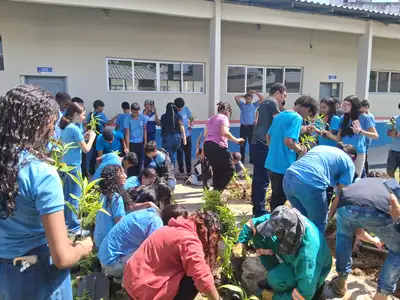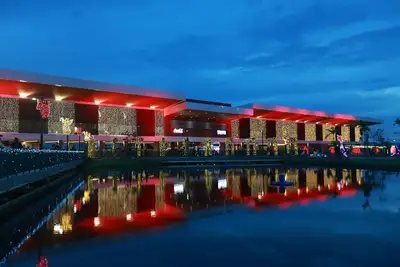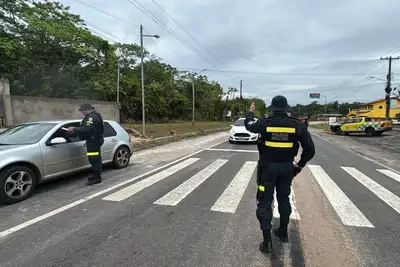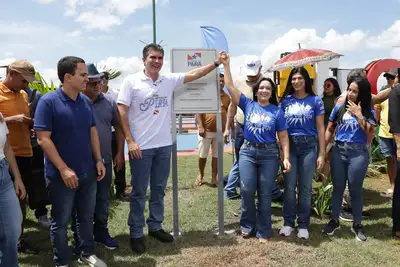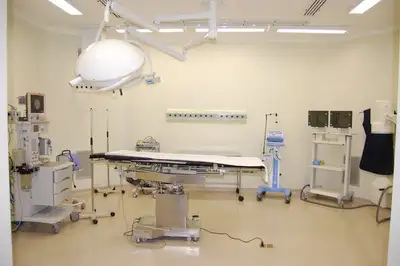After 8 years of struggle, patient rings the ‘Victory Bell’ and celebrates recovery at Octávio Lobo Hospital
Teenager from Breves, southwest Marajó, wins the battle against leukemia and inspires hope in cancer patients
With the strong and symbolic sound of the “Victory Bell” echoing through the halls of the Octávio Lobo Children's Oncology Hospital (Hoiol) in Belém, 15-year-old Samuel Mendes celebrated the end of a long and challenging battle against cancer. A native of the municipality of Breves, in the Marajó archipelago, the young man faced eight years of treatment for Acute Lymphoblastic Leukemia (ALL) and now celebrates his recovery with plans to continue studying and dedicating himself to his favorite sport, volleyball.
Samuel arrived at the hospital in June 2017, when he was just 7 years old, after showing symptoms such as persistent fever with no apparent cause, paleness, and spots on his body. The cancer diagnosis completely changed the family's routine, which had to move to the capital of Pará to continue treatment.
“He started to lose weight, to become pale, his lips changed color. We knew it wasn't normal. The diagnosis of ALL came, and that’s when our struggle began,” recalls Rayane Mendes, 35, Samuel's mother. She shares that she was pregnant with her second daughter, Isadora, 8 years old, when she received the news.
While waiting for the birth of her daughter, Rayane explains that it was her husband, Benedito Brandão, 41, who closely accompanied Samuel, especially during hospitalizations. Facing the illness of their eldest son required faith, adherence to medical guidelines, and a solid support network. “We followed everything to the letter. No streams, pools, sun, or dew. And Samuel has always been very obedient,” Rayane affirms, emotional.
Symbolism - The “Victory Bell” is a project created six years ago by the Hoiol team and aims to celebrate recovery while inspiring other patients undergoing cancer treatment. “It was a way to give a face to recovery. The bell represents hope, shows that cancer can be cured, and that treatment works,” explains Elizabeth Cabeça, a member of the Patient Experience Office (EEP), the department that conceived the initiative. Since its inception, 357 patients have rung the bell.
Walking through the hospital corridors ringing the bell is a moment awaited by patients, families, and the staff of the Children's Oncology unit. “To the mothers who are starting this process now, I say: be patient, follow medical guidelines seriously, and take care of your children. It works, yes. There is a cure for cancer. My son is living proof of that,” advises Rayane.
Samuel, now a teenager full of plans, wants to turn his overcoming into new achievements. “Today I feel free. I want to continue studying and playing volleyball. I am training at Tuna Luso Brasileira and I want to be a professional player,” reveals the young man, with a sparkle in his eyes, a wide smile, and paint-stained hands. This is because the health unit features the “Tree of Life,” a mural where all cured patients are invited to stamp with one of their colored hands. Samuel's hand was painted by his family. A moment full of meaning for everyone. “What an emotion, my God!” exclaimed Rayane.
The sound of the Victory Bell, which marked the end of a challenging phase for Samuel, also announces the beginning of a new life for the young man. As for the patients still undergoing treatment, the young man has become an inspiration to keep faith and hope alive in the fight against cancer. For the staff, the gesture symbolizes the success of the dedication to patient care and serves as encouragement to always provide the best assistance.
Welcoming - Working in the health unit since its foundation in 2015, oncologist and current technical director of Hoiol, Alayde Vieira was the one who welcomed Samuel and Rayane as soon as they arrived at the unit. “She (Alayde) was amazing with us, explained the disease, which reassured us a lot,” recalls the young man's mother.
Receiving a cancer diagnosis in a child is, for many families, a moment of pain, fear, and uncertainty. There are doubts about recovery, treatment duration, and risk of death. According to Alayde, these are the first questions that parents and guardians bring to the medical team. “It is necessary to communicate with warmth. We need to understand the family's pain because the impact of the word ‘cancer’ on a child is devastating,” explains the specialist.
The doctor emphasizes that pediatric oncology treatment requires monitoring for at least five years after the end of therapy. This period is essential to monitor possible relapses, that is, the return of cancer, which can occur due to “dormant” cells that resist initial treatment. “Each year that passes after treatment reduces the chance of the disease returning by about 20%. After five years, if there are no signs of relapse, we consider the child cured,” clarifies Alayde.
The difference between an early and late diagnosis can be decisive for the success of treatment. When identified in the early stages, childhood cancer has high chances of cure, and treatment tends to be less aggressive, with fewer adverse effects. “Childhood cancer should not be seen as a death sentence. Today we have effective treatments, increasing cure rates, and specialized teams. But we need these children to reach us in time. And this is only possible with information and support from the first symptom,” concludes Alayde.
Service: Accredited as a High Complexity Oncology Unit (Unacon), Hoiol is a reference in the Amazon region for the diagnosis and specialized treatment of childhood cancer, in the age group between 0 and 19 years. Currently, the unit serves over 900 patients from 144 municipalities in Pará and neighboring states.
Text: Ellyson Ramos - Ascom Hoiol


